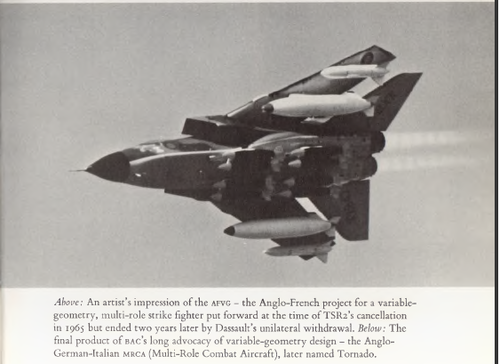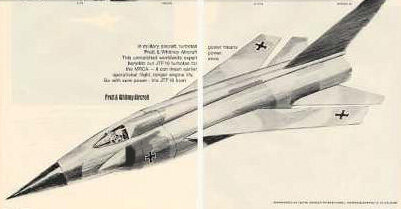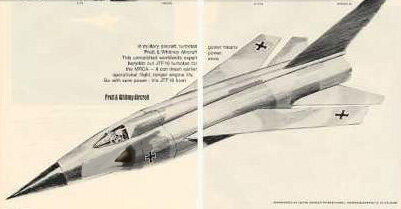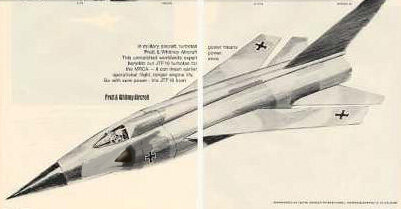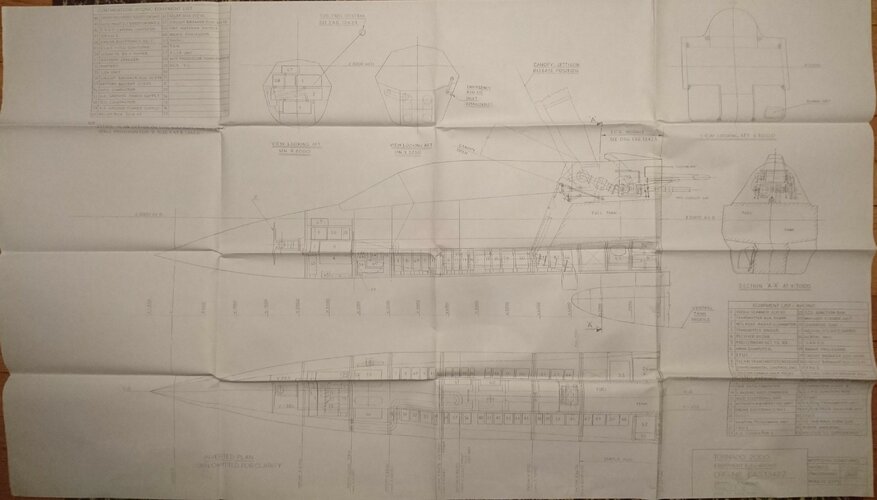Full list of UK tornados: https://assets.publishing.service.g...uploads/attachment_data/file/797005/02848.pdf
You are using an out of date browser. It may not display this or other websites correctly.
You should upgrade or use an alternative browser.
You should upgrade or use an alternative browser.
Tornado Projects
Purpletrouble
ACCESS: Secret
- Joined
- 16 September 2019
- Messages
- 449
- Reaction score
- 420
Interesting - the GRxT designator was never used in service however and the aircraft document set made no reference to it.
Also interesting the GR1Bs never got upgraded, I assume due non standard wiring for the Sea Eagle mod and it was one less thing to consider in the GR4 plan.
Also the recce birds had their onboard recce system deactivated (but left in as ballast!) after RAPTOR entered service, which could be used on strike ac (also linked to Sqns becoming multi-role), and the latter were never fully deployable as they lacked the gun and didn’t get all the other mods (various “Diamond standards”), used for UK flying.
I think the phrase “fleets within fleets” was coined from Tornado!
Also interesting the GR1Bs never got upgraded, I assume due non standard wiring for the Sea Eagle mod and it was one less thing to consider in the GR4 plan.
Also the recce birds had their onboard recce system deactivated (but left in as ballast!) after RAPTOR entered service, which could be used on strike ac (also linked to Sqns becoming multi-role), and the latter were never fully deployable as they lacked the gun and didn’t get all the other mods (various “Diamond standards”), used for UK flying.
I think the phrase “fleets within fleets” was coined from Tornado!
So TTTE, had a fleet of GR1T & GR1, the initial pilot training / conversion etc was carried out on the GR1T (Tail number under 50) the later stages (and Nav Training) transitioned onto GR1 aircraft with a standard fit (Tail numbers above 50).
TTTE had a fleet of RAF, German and Italian aircraft and these were shared aircraft, so not unusual to see RAF crews flying German aircraft, or Germans flying Italian aircraft : watch
I think at time of war the instructors were to be used as replacements for squadron loses, as were the A/C.
Cottesmore itself was to be used as a USAF tanker base, this was practiced with detachments in the early 90's.
TTTE had a fleet of RAF, German and Italian aircraft and these were shared aircraft, so not unusual to see RAF crews flying German aircraft, or Germans flying Italian aircraft : watch
I think at time of war the instructors were to be used as replacements for squadron loses, as were the A/C.
Cottesmore itself was to be used as a USAF tanker base, this was practiced with detachments in the early 90's.
- Joined
- 6 September 2006
- Messages
- 4,834
- Reaction score
- 9,457
The dual-control Tornado GR.1s were fully combat capable, I have never seen a reference stating that they were not and indeed that is why they never received a separate designation, none of the other Tornado partner nations gave their conversion trainers a different designation either.
The small amount of flight instruments only replaced the port CRT display, so did not remove everything the Nav/WSO needed.
Where the confusion might of come from is that the TTTE received many of the first batch of 23 GR.1s that lacked the LRMTS and that batch included 12 of the 36 twin-stick Tornados built.
The MoD FOI request response bob225 posted is interesting though, I had always thought - and its always been claimed - that the GR.1(T) designation was purely unofficial, likewise the F.3(T). I have never come across mention of the GR.4(T) before either.
The small amount of flight instruments only replaced the port CRT display, so did not remove everything the Nav/WSO needed.
Where the confusion might of come from is that the TTTE received many of the first batch of 23 GR.1s that lacked the LRMTS and that batch included 12 of the 36 twin-stick Tornados built.
The MoD FOI request response bob225 posted is interesting though, I had always thought - and its always been claimed - that the GR.1(T) designation was purely unofficial, likewise the F.3(T). I have never come across mention of the GR.4(T) before either.
Hood's quite right, the GR1T's had a few repeat bits so they could be flown from the back but they still need to be able to replicate the full range of flight for student training. Just found the FOI whilst googling but thought it would be of interest.
Purpletrouble
ACCESS: Secret
- Joined
- 16 September 2019
- Messages
- 449
- Reaction score
- 420
The dual-control Tornado GR.1s were fully combat capable, I have never seen a reference stating that they were not and indeed that is why they never received a separate designation, none of the other Tornado partner nations gave their conversion trainers a different designation either.
The small amount of flight instruments only replaced the port CRT display, so did not remove everything the Nav/WSO needed.
Where the confusion might of come from is that the TTTE received many of the first batch of 23 GR.1s that lacked the LRMTS and that batch included 12 of the 36 twin-stick Tornados built.
The MoD FOI request response bob225 posted is interesting though, I had always thought - and its always been claimed - that the GR.1(T) designation was purely unofficial, likewise the F.3(T). I have never come across mention of the GR.4(T) before either.
As I said - I wasnt sure if that was the case in GR1 days so interesting to hear they were, but it absolutely was for GR4s as they had non of the displays needed for LGBs, LDPs, RAPTOR, ALARM. I suspect the they could use CBLS for orwctice dumb bombs but that faded from use a long time ago!
Agree on T designation- not in any ac documents and never used even informally in managing the fleets - always referred to as Strikes and Trainers, and fleet managed separately.
Purpletrouble
ACCESS: Secret
- Joined
- 16 September 2019
- Messages
- 449
- Reaction score
- 420
Replicating full range of flight btw doesn’t mean needing all the WSO/Nav stuff - and conspires against it for space and layout. If you look at a cockpit the front and back are quite different on a strike. Again, this was GR4. Remember, Navs were not pilots - they often seemed a but looked down upon by the full wings, although still not actually a blunty!
You say tail numbers under 50 were trainers for TTTE - yet as a fleet I thought it wasn’t managed by tail numbers for a long time - later years of GR4. I understood it was always by serial number and the sqn code (letters). Early days too?
Actually Tornado was a pain, you had the Build Number, BS/BTXXX (might be wrong - that could be Typhoon nomenclature, but Tonka was similar), the RAF/MOD serial number eg. XZ123, and the tail code. Different organisations, industry / depth maintenance / fleet management / squadron used different ones! It got very confusing!
I didn’t mean to suggest btw TTTE was all trainers, but very much the majority as XV became and OCUs generally are.
You say tail numbers under 50 were trainers for TTTE - yet as a fleet I thought it wasn’t managed by tail numbers for a long time - later years of GR4. I understood it was always by serial number and the sqn code (letters). Early days too?
Actually Tornado was a pain, you had the Build Number, BS/BTXXX (might be wrong - that could be Typhoon nomenclature, but Tonka was similar), the RAF/MOD serial number eg. XZ123, and the tail code. Different organisations, industry / depth maintenance / fleet management / squadron used different ones! It got very confusing!
I didn’t mean to suggest btw TTTE was all trainers, but very much the majority as XV became and OCUs generally are.
You say tail numbers under 50 were trainers for TTTE - yet as a fleet I thought it wasn’t managed by tail numbers for a long time - later years of GR4. I understood it was always by serial number and the sqn code (letters). Early days too?
Not sure, but all the TTTE jets were referred to by the tail numbers ie: I41 (the one landing wheels up in the above video, B50 etc) Not sure how the numbering came about but whilst i'm sure the fleet was maintained via serial numbers the ground-crews all refered to the jets tail numbers
No idea on the GR4 sorry
Not sure, but all the TTTE jets were referred to by the tail numbers ie: I41 (the one landing wheels up in the above video, B50 etc) Not sure how the numbering came about but whilst i'm sure the fleet was maintained via serial numbers the ground-crews all refered to the jets tail numbers
No idea on the GR4 sorry
- Joined
- 13 August 2007
- Messages
- 8,446
- Reaction score
- 11,001
i notice some of the Panavia 100 model and illustrations have no visible Air intake.

are those blended Intake, from BAC and heritage of the UKVG program?
are those blended Intake, from BAC and heritage of the UKVG program?
- Joined
- 6 September 2006
- Messages
- 4,834
- Reaction score
- 9,457
I must admit I have not come across details of the twin-stick GR.4 conversions, so I defer to your sources here.
At its peak the TTTE had 22 German, 21 RAF and 7 Italian Tornados. No doubt these airframes chopped and changed throughout time and of course the GR.1(T)s were spread around the squadrons too.
Interestingly none of that first batch of 23 aircraft were converted to GR.4 standard, so I suppose they never did receive their LRMTS and this would have hampered any operational use (and training) unless you relied on 'dumb' weapons. Whether any of these had wiring for WE.177 I have no idea (I suspect not).
Getting into Build Number/ Construction Number/ Serial Number discussions is dangerous, each manufacturer has their own foibles and ways of allocating those numbers and selecting which number is the 'aircraft' number (e.g. wing main frame, or something else). But the GR.1 trainers seem to have BTxxx build numbers, so at least BAC/BAe thought the technical difference worth noting.
At its peak the TTTE had 22 German, 21 RAF and 7 Italian Tornados. No doubt these airframes chopped and changed throughout time and of course the GR.1(T)s were spread around the squadrons too.
Interestingly none of that first batch of 23 aircraft were converted to GR.4 standard, so I suppose they never did receive their LRMTS and this would have hampered any operational use (and training) unless you relied on 'dumb' weapons. Whether any of these had wiring for WE.177 I have no idea (I suspect not).
Getting into Build Number/ Construction Number/ Serial Number discussions is dangerous, each manufacturer has their own foibles and ways of allocating those numbers and selecting which number is the 'aircraft' number (e.g. wing main frame, or something else). But the GR.1 trainers seem to have BTxxx build numbers, so at least BAC/BAe thought the technical difference worth noting.
Purpletrouble
ACCESS: Secret
- Joined
- 16 September 2019
- Messages
- 449
- Reaction score
- 420
Yes - BAe saw things in a more logical way.
I can only speak from first hand experience in later years, hence only going off passed on knowledge for GR1.
The GR4 fleet was numbered in the 2010s (Ithink?) from 001 to 142?, i.e. all converted GR4s. The ZX123 wasn’t liked as it tends to get reduced to last 3, which on a large fleet over time and different preceding letters gave duplicates. Other fleets use that exclusively.
Sorry - I meant B50 type codes as “Sqn code” and yes that’s what groundcrew referred to them as until the 001-142 was introduced and painted top of the fin instead. If you work across all the areas it becomes very confusing though! And lets not get started on the times a similar numbered jet was worked by mistake, let alone the times that wasn’t realised...
A beast of an aeroplane - stand in front and it looks like its up on its haunches with the high aft fus and fin and the massive intakes as a huge scowl. Very proud to have been a little part of it!
I once asked an old WO why we’d only converted 142 of the 250 odd 1/1A we built, he said all the rest had crashed. A different era in the 80s in terms of routinely accepting losses against a context of a war with vast losses. I don’t think he was far wrong.
I can only speak from first hand experience in later years, hence only going off passed on knowledge for GR1.
The GR4 fleet was numbered in the 2010s (Ithink?) from 001 to 142?, i.e. all converted GR4s. The ZX123 wasn’t liked as it tends to get reduced to last 3, which on a large fleet over time and different preceding letters gave duplicates. Other fleets use that exclusively.
Sorry - I meant B50 type codes as “Sqn code” and yes that’s what groundcrew referred to them as until the 001-142 was introduced and painted top of the fin instead. If you work across all the areas it becomes very confusing though! And lets not get started on the times a similar numbered jet was worked by mistake, let alone the times that wasn’t realised...
A beast of an aeroplane - stand in front and it looks like its up on its haunches with the high aft fus and fin and the massive intakes as a huge scowl. Very proud to have been a little part of it!
I once asked an old WO why we’d only converted 142 of the 250 odd 1/1A we built, he said all the rest had crashed. A different era in the 80s in terms of routinely accepting losses against a context of a war with vast losses. I don’t think he was far wrong.
- Joined
- 27 December 2005
- Messages
- 17,748
- Reaction score
- 26,414
Nope. They are based on early models shown publicly which have been said to not have intakes for security reasons. Perhaps instead they were based on wind tunnel models which have faired-over intakes, seems more likely to me. At no point were these "real".i notice some of the Panavia 100 model and illustrations have no visible Air intake.

are those blended Intake, from BAC and heritage of the UKVG program?
Silencer1
That now I am the Ruler of the Queen's Navee!
- Joined
- 3 August 2009
- Messages
- 897
- Reaction score
- 582
Hi!
Curiouly, German Luftwaffe used designation PA-200 for their "Tornados"

 www.bundeswehr.de
www.bundeswehr.de
Moreover, some IDS aircraft equipeed with „RecceLite“ recconaissance pod named "Tornado Recce", so a number of "Tornado" versions still growing
If I remember correctly, Panavia-100 and Panavia-200 names have been used for single-seater and two-seater projects of Panavia, which lead eventually to production of two-seater version.
Curiouly, German Luftwaffe used designation PA-200 for their "Tornados"

Tornado
Die Luftwaffe verfügt über insgesamt 85 Mehrzweckkampfflugzeuge des Typs PA-200 Tornado in drei Versionen.
Moreover, some IDS aircraft equipeed with „RecceLite“ recconaissance pod named "Tornado Recce", so a number of "Tornado" versions still growing
If I remember correctly, Panavia-100 and Panavia-200 names have been used for single-seater and two-seater projects of Panavia, which lead eventually to production of two-seater version.
- Joined
- 13 August 2007
- Messages
- 8,446
- Reaction score
- 11,001
Nope. They are based on early models shown publicly which have been said to not have intakes for security reasons. Perhaps instead they were based on wind tunnel models which have faired-over intakes, seems more likely to me. At no point were these "real".
Either this or they had not yet figured out what intake to use on plane
and tell illustrator "do something cool looking for costumer..."
If I remember correctly, Panavia-100 and Panavia-200 names have been used for single-seater and two-seater projects of Panavia
yes, Panavia-100 was planned as one man fighter jet, while Panavia-200 was two man bomber.
after Belgium and holland left the Panavia project and Britain join it, it became two man multi combat aircraft we know and love
The fin tank was recommissioned for GW1, in normal ops it was not used.The picture of the canopy-less flight was after the loss of a GR1 where the nav ejected but the pilot didn’t and died. There was a lot of controversy as to how this had happened and I believe the flight was to rebuild confidence from aircrew that it was safe(ish). Of course the propensity of the secondary power system to catch fire didn’t help either...
Re ADV having a fin tank - so do the strikes, but generally put out of use as it was a pain in the arse (leaks).
- Joined
- 27 December 2005
- Messages
- 17,748
- Reaction score
- 26,414
Some interesting info on production Tornados, but absolutely off-topic for this section of the forum. This dicussion is supposed to be about unbuilt projects related to the Tornado.
Please try to post in appropriate topics!
Please try to post in appropriate topics!
Silencer1
That now I am the Ruler of the Queen's Navee!
- Joined
- 3 August 2009
- Messages
- 897
- Reaction score
- 582
Please try to post in appropriate topics!
I beg your pardon, as my post #57 isn't related to unbuilt versions'.
Could you be so kind to transfer it in appropriate thread?
Some interesting info on production Tornados, but absolutely off-topic for this section of the forum. This dicussion is supposed to be about unbuilt projects related to the Tornado.
Please try to post in appropriate topics!
Ooops, sorry for that, although i am unable to find a more appropriate thread, could we start something more suitable somewhere else?
- Joined
- 27 December 2005
- Messages
- 17,748
- Reaction score
- 26,414
If there's no existing topic, just make one. I'll try and detangle this topic later.
- Joined
- 6 September 2006
- Messages
- 4,834
- Reaction score
- 9,457
The intake position had been a bone of contention during the design phase.
While researching for HS.1182 I came across the minutes of a meeting in December 1969 at which Dr Dietrich Küchemann was present. When discussing the HS.1182's intake position, Küchemann commented on the contemporary MRCA intakes. There had been two schools of thought; high or low-mounted intakes and he remarked how the management decision for a compromise mid-way position was the worst of both worlds!
While researching for HS.1182 I came across the minutes of a meeting in December 1969 at which Dr Dietrich Küchemann was present. When discussing the HS.1182's intake position, Küchemann commented on the contemporary MRCA intakes. There had been two schools of thought; high or low-mounted intakes and he remarked how the management decision for a compromise mid-way position was the worst of both worlds!
- Joined
- 16 April 2008
- Messages
- 9,606
- Reaction score
- 14,495
From the book - British Aircraft Corporation.
The picture here is the "below" part of the caption, an actual Tornado rather than AFVG.
- Joined
- 26 May 2006
- Messages
- 34,900
- Reaction score
- 15,760
The picture here is the "below" part of the caption, an actual Tornado rather than AFVG.
The upper picture is here;
orlovsky
I really should change my personal text
- Joined
- 28 May 2016
- Messages
- 268
- Reaction score
- 570
Flight international 1979, p 502-503 mentions a stripped-down Tornado (- 3000 lbs "by removing avionics and possibly the second man") to meet AST 403.
"Industry replied to AST 403 with 30 designs ranging from a souped - up Jaguar to a stripped - down Tornado..."
This is all from snippets on google books, but it seems to stay with the Tornado fuselage and VG wings? Is this one of the projects already mentionned?
"Industry replied to AST 403 with 30 designs ranging from a souped - up Jaguar to a stripped - down Tornado..."
This is all from snippets on google books, but it seems to stay with the Tornado fuselage and VG wings? Is this one of the projects already mentionned?
Just been rereading this thread; with regard to the Tornado 2000, did the RAF ever evaluate the design with any intention of actually purchasing it? Also with a regard to a lighter fighter variant, I have read that the RB 199 is unsuitable for the rapid changes to the power setting that is required in air combat manoeuvering?
BLACK_MAMBA
ACCESS: Secret
- Joined
- 17 July 2019
- Messages
- 382
- Reaction score
- 879
I think along the same line - I have read in a few places that they considered fitting EJ200's to the F.3 at least. Was that ever really more than just a "hey that sounds cool" idea or did they actually investigate the matter before quite rightly abandoning it on cost grounds?Just been rereading this thread; with regard to the Tornado 2000, did the RAF ever evaluate the design with any intention of actually purchasing it? Also with a regard to a lighter fighter variant, I have read that the RB 199 is unsuitable for the rapid changes to the power setting that is required in air combat manoeuvering?
- Joined
- 25 January 2020
- Messages
- 1,279
- Reaction score
- 1,953
Would the stripped down Tornado remain a twin-seater, or would it have resembled the Panavia 100?Flight international 1979, p 502-503 mentions a stripped-down Tornado (- 3000 lbs "by removing avionics and possibly the second man") to meet AST 403.
"Industry replied to AST 403 with 30 designs ranging from a souped - up Jaguar to a stripped - down Tornado..."
This is all from snippets on google books, but it seems to stay with the Tornado fuselage and VG wings? Is this one of the projects already mentionned?
I did a bit of work on what was known as “Tornado 2000” in the late ‘90s. After the success of the Jaguar 96 and 97 (later GR3 and GR3A) where the 25 year Design Authority had expired and Commercial Off The Shelf (COTS) improvements were made to great success. The same idea was applied to the F3 - first Tornado flight being 1974, so 1999 being 25 years (although there was some debate about F3 with ADV first flight not until 1979). My involvement was on the proposed use of a Mission Planning System (that ended up becoming the Tornado Advanced Mission Planning Aid - TAMPA) that got rid of the old Cassette Preparation Grounds Station (CPGS) and also using the same Helmet Mounted Sight (HMS) as used in Jag 97 but to be used with ASRAAM with 90 degree off-boresight capability (the best the F3 avionics could manage at the time). The discussion about APG-65 was also ongoing, but BLUE VIXEN as fitted to the Sea Harrier F/A2 was the favourite alongside what would become Stage 2G* FOXHUNTER in the F3. The fitment of EJ200s to give better thrust in the dry power range at medium and high level was also a part of the plan.
It was all coming along nicely when it came to a grinding halt. The issue being that the Tornado 2000 would end up more capable than the Eurofighter 2000 and so that could not be allowed to happen! Project cancelled by about 1999 and all the goodies we had been given to evaluate were taken away (some, like TAMPA, came back later on).
In hindsight, the F3 airframes were tired from fatigue when they retired - the problem being that RB199 was not good at medium to high-level and so the crews had been constantly loading/unloading G to manage their energy in Air Combat Training. The airframes would have needed further fatigue work if the life extension for Tornado 2000 would provide value for money. It’s a shame, though, as even Tornado F3 with AMRAAM, ASRAAM, JTIDS, TRD, Mode 4 IFF Interrogator and Secure Radios proved to be a formidable foe on Ex RED FLAG in the first part of the 21st Century. It did become the jet it always should have been in its last 5-10 years of service.
Happy New Year to you all, Gaz
(F3 Nav/WSO with ~1750hrs flying time)
It was all coming along nicely when it came to a grinding halt. The issue being that the Tornado 2000 would end up more capable than the Eurofighter 2000 and so that could not be allowed to happen! Project cancelled by about 1999 and all the goodies we had been given to evaluate were taken away (some, like TAMPA, came back later on).
In hindsight, the F3 airframes were tired from fatigue when they retired - the problem being that RB199 was not good at medium to high-level and so the crews had been constantly loading/unloading G to manage their energy in Air Combat Training. The airframes would have needed further fatigue work if the life extension for Tornado 2000 would provide value for money. It’s a shame, though, as even Tornado F3 with AMRAAM, ASRAAM, JTIDS, TRD, Mode 4 IFF Interrogator and Secure Radios proved to be a formidable foe on Ex RED FLAG in the first part of the 21st Century. It did become the jet it always should have been in its last 5-10 years of service.
Happy New Year to you all, Gaz
(F3 Nav/WSO with ~1750hrs flying time)
Welcome Gaznav, I saw the video below a few days ago and after his description of the RB199 as a turbojet rather than a turbofan, I wondered about his other comments. You seem to be the ideal person to comment on the video if you have the time.
Regards
TOMCAT Pilot Talks About His Exchange Tour Flying the Tornado F3 with the RAF | Interview Clips - YouTube
Regards
TOMCAT Pilot Talks About His Exchange Tour Flying the Tornado F3 with the RAF | Interview Clips - YouTube
- Joined
- 19 July 2016
- Messages
- 4,279
- Reaction score
- 3,462
Not possible to view that due to the ignorance of googletube.
- Joined
- 29 September 2006
- Messages
- 1,793
- Reaction score
- 1,360
Tornado 2000 has already been pictured in this thread. But do any publications illustrate the other unbuilt projects mentioned? What about "Typhoon to Typhoon"? Thanks in advance.
In “T to T“ there is a little text on p178 on the project, but Gaznav covers it (and more). Two pics on p179: one seen in post 4 in this thread, one nice model from BAe Wharton.
@Gaznav : Did the project you worked on include the new front fuselage as seen on the first page of this topic?
I wasn’t aware of any changes to the airframe. The thing I did hear was that although EJ200s would fit in the Tornado, they would not fit the the thrust reverser buckets. So you would need a way to stop the aircraft as the brakes were never designed as the primary stopping aid on landing (as many found out with hot brakes and needing a fire crew!).
Yes, there are a few things not quite correct in that video. I won’t call them out in public, though. Poor form!Welcome Gaznav, I saw the video below a few days ago and after his description of the RB199 as a turbojet rather than a turbofan, I wondered about his other comments. You seem to be the ideal person to comment on the video if you have the time.
Regards
TOMCAT Pilot Talks About His Exchange Tour Flying the Tornado F3 with the RAF | Interview Clips - YouTube
However, have a listen to my buddy “Keebs” in this video for a juxtaposed viewpoint.
oh excellent. That'll help me refine my Tornado 2000 buildTornado 2000, EAG.13422, July 1990
- Joined
- 27 May 2008
- Messages
- 1,178
- Reaction score
- 2,483
I wasn’t aware of any changes to the airframe. The thing I did hear was that although EJ200s would fit in the Tornado, they would not fit the the thrust reverser buckets. So you would need a way to stop the aircraft as the brakes were never designed as the primary stopping aid on landing .
Ah no, Tornado wheel brakes fully met the Def Stan 970 Chapter 300 requirements both in terms of stopping distance and safety. The reverse thrust considerably exceeded the 970 stopping performance but never quite met the safety requirements. So if there was any doubt in the engine performance, the peacetime SOP was to land with the brakes. The thrust reverser came into it own if the runway was smashed up, the idea being to make use of short lengths between holes, then it was up to the pilot to assess the overall risk. At max TR the stopping distance was impressively short.
The Tornado was a rare example of wheel brakes in both the main wheels and nose wheels.
Also in my experience the wheel brakes are by Certification always the primary means of stopping an aircraft.
Last edited:

